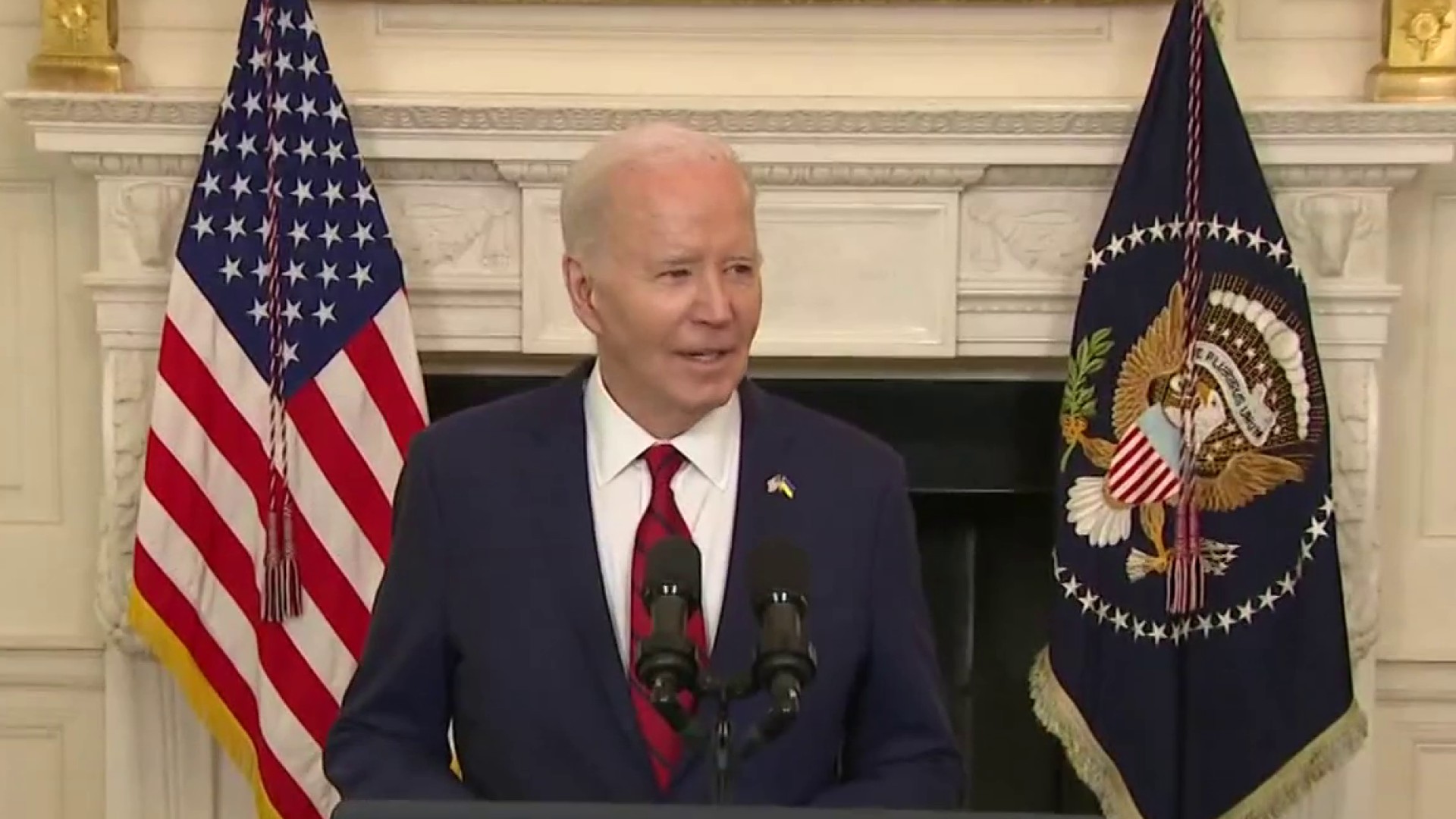From the shore of Roosevelt Island last fall, Pam Gordimer was focused on capturing the beauty of the Key Bridge on canvas when her dog, Rosie, started to growl.
The painter then saw a man, stick in hand, aggressively approach while yelling obscenities.
“I didn’t know what to do. He just kept coming towards me, and my dog went nuts,” she said.
Rosie’s barking scared the man off, but Gordimer was afraid the danger wasn’t over. She called 911 with her mobile phone and was connected to the 911 center in Arlington County, where a call-taker told her she was not within their jurisdiction and transferred her to D.C.'s 911 center instead. But help didn’t arrive, as D.C. should have transferred her again to the U.S. Park Police.
We're making it easier for you to find stories that matter with our new newsletter — The 4Front. Sign up here and get news that is important for you to your inbox.
Gordimer wonders what might have happened had the circumstances turned more dire.
"I would like to know that, if I call 911 if I have a problem, that I'm going to be connected to the right person and that I'm going to be safe,” Gordimer said.
She’s among thousands in our region who see their requests for help delayed because of call transfers — often because of outdated technology cellphone carriers still use to route emergency calls.
Local
Washington, D.C., Maryland and Virginia local news, events and information
The News4 I-Team requested call data from five 911 centers in the D.C. region and found nearly 100,000 calls each year, sometimes hundreds of calls a day, have to be transferred to reach the correct jurisdiction before help can be sent.
If someone's heart isn't beating or if they're bleeding, those seconds may mean the difference between life and death. And they sometimes do.
Brandon Abley, National 911 Association
Experts with the National 911 Association say those transfers happen routinely across the country because of the outdated technology, which routes a wireless call to the closest available cell tower — and not necessarily to the right 911 jurisdiction. The closer you are to the edge of a neighboring jurisdiction, the more likely it is your call will go to the wrong 911 center and have to be transferred.
"The problem with call transfers is that they waste time," said Brandon Abley, the association’s director of technology. "If someone's heart isn't beating or if they're bleeding, those seconds may mean the difference between life and death. And they sometimes do."
Not all emergency call transfers are misroutes. Some jurisdictions are supposed to receive calls for neighboring partners and transfer to the right authorities accordingly. But experts say that doesn’t account for the majority of transfers.
“We have reason to believe that 911 misroutes are not occasional or isolated and in fact occur frequently, on occasion with deadly consequences,” former Federal Communications Commission Chairman Ajit Pai wrote in 2018.
‘Deadly Consequences’
The issue was highlighted last summer, when a teen drowned in a Virginia creek. Emergency calls connected to cellphone towers in Loudoun County and across the river in Montgomery County, Maryland. Frantic callers were transferred in both directions.
"The last thing you want is to get transferred to somebody else in a different state, and that's exactly what happened," Sharon Koorbusch, who repeatedly called 911 that day, told News4 last year.
First responders and emergency officials from both counties teamed up to investigate the handling of those calls and enacted changes. They told the I-Team that, now, whichever jurisdiction gets the first call sends help and then contacts the neighboring jurisdiction to do the same.
"The bottom line is our goal is to get help there regardless of what uniform they're wearing," said Cassandra Onley, director of Montgomery County's Emergency Communications Center. "It's heartbreaking because you want to be able to go through that phone and just provide that help right then and there."
Through open records requests, the I-Team obtained annual transfer data for the District, Montgomery and Prince George’s counties in Maryland, as well as Arlington County and Alexandria in Virginia.
Last year, most of the 58,000 transfers in and out of the District involved Prince George's County — nearly 41,000. Montgomery County transferred more than 15,000 calls to D.C. and another 16,000 to Prince George's.
Data show Alexandria transferred more than 3,200 emergency calls out in 2020 — including 1,000 calls to Arlington County. And 530 calls meant for Alexandria first went to Arlington, instead.
All told, Arlington, which is supposed to field 911 calls from some neighboring jurisdictions, transferred out more than 7,700 calls in 2020, including nearly 2,400 to the District.
"When you have a lot of calls originating on the borders in the city, definitely there's a ping pong effect. That is a challenge," said Teddy Kavaleri, chief information technology officer for D.C.'s Office of Unified Communications.
Those transferred calls often only include the caller's audio, not additional location data the cell carrier may send. He estimates about 5 percent of the District’s 911 calls require transfers to another jurisdiction.
Solutions Ahead
Experts explained that, while an Uber driver can see a cellphone's exact location, most 911 centers cannot, because they only see the cell tower information the phone carrier sends.
"If they don't give us a very good location, we're stuck with it until we do the things to get a better location fix," said Steve McMurrer, 911 systems administrator for Fairfax County, Virginia, which has already upgraded to what’s called a Next Generation 911 system.
Fairfax County also integrated cellphone location data from a separate web-based program, called Rapid S.O.S., into the maps its call-takers and dispatchers use to help pinpoint a caller’s location. McMurrer said that while it's not 100 percent accurate, it’s close.
“When we all transition onto this Next Generation 911 network, when we transfer the call, all that equivalent map data would go with the call, and that call-taker would get an instant picture as to where [someone] is,” McMurrer explained.
In late March, Fairfax County also became the first in the National Capital Region to get what's called "location-based routing" from T-Mobile, the first cellphone carrier to offer 911 centers a caller's exact location using tools such as GPS and Wi-Fi.
"We've continued to push the envelope on this because we know it's critical for customers," said Grant Castle, vice president of device engineering for T-Mobile.
As of now, the FCC does not require carriers to provide location-based routing data for emergency calls. The FCC did not respond to the I-Team's request for an interview.
"We're going to continue to be out ahead of the FCC, but absolutely, I think this is 100 percent the right thing to do and everybody should get on board," said Castle, adding the carrier is just waiting on each 911 center to provide maps of where they want those border calls to be sent.
The I-Team reached out to other major wireless carriers about whether they will follow suit. In a statement, AT&T said it’s completing testing and deployment of Next Gen 911 device-centric location services and is scheduled to launch in the D.C. region later this year.
A Verizon spokesman said, in part: "Verizon currently routes 911 calls based on cell site location, which reach the correct 911 call center in the vast majority of instances” and will deploy device-based 911 routing in coordination with DC's Next Gen system.
T-Mobile confirmed it is currently working on incorporating location-based routing technology into the District's 911 service. Kavaleri said D.C should also have Rapid S.O.S incorporated into its maps in the coming weeks.
Onley, with Montgomery County, said its 911 center is first upgrading its phone system before implementing Next Gen 911, with the target of launching the system in the summer.
Arlington 911 leaders said its Next Gen 911 upgrade will also include more detailed mapping to narrow a caller's location starting next month.
"We carved out a boundary around every single piece of property," said Angelina Candelas-Reese, 911 systems manager for Arlington County, explaining how that boundary will help better direct calls to the right jurisdiction.
Arlington should have transferred Gordimer's call from Roosevelt Island directly to the U.S. Park Police, as D.C. authorities only have jurisdiction for the water around the island. The District's dispatcher failed to send a federal officer once police advised it wasn't their call, either.
"If we do mis-transfer them, a lot of times it's because of those confusing areas where federal properties come into play," Candelas-Reese explained to the I-Team.
Since that incident, Arlington’s 911 leaders said they’ve provided additional training to employees about transfer protocols and are streamlining response agreements with D.C. and Park Police.
The experts say some transfers will always be necessary and human error will always happen, but the better technology will cut down on misrouted calls.
Kavaleri told the I-Team when the District's new technology is fully implemented later this year, calls could be routed directly to Park Police.
That’s welcome news to Gordimer.
"People’s lives are at stake," she said.
Reported by Jodie Fleischer, produced by Katie Leslie, and shot and edited by Steve Jones and Jeff Piper.



